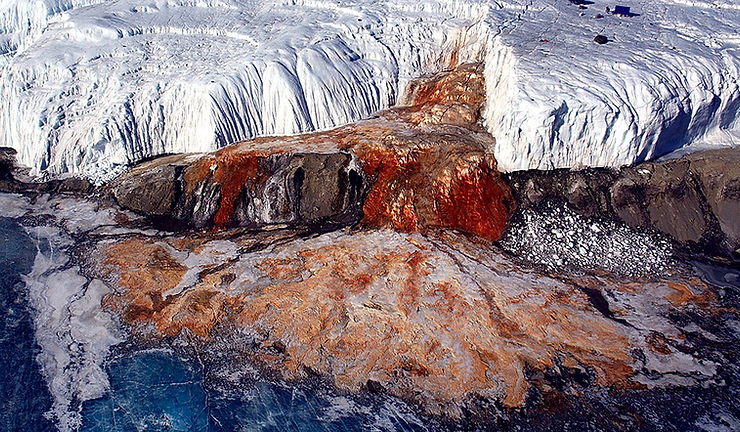By: Daniel Xia
Nestled in Antarctica’s icy terrain, Blood Falls has mystified explorers for over a hundred years with its vibrant red waters. From its discovery by Griffith Taylor in 1911 to recent breakthroughs led by W. Berry Lyons and his team, this unique waterfall’s crimson secret has finally been unraveled—microscopic iron-rich particles create its stunning hue, offering insights into possible extraterrestrial life.
Discovered in Antarctica at the edge of the Taylor Glacier over a century ago, Blood Falls has captivated adventurers with its striking red waters. Back in 1911, a scientist named Griffith Taylor first found it and thought red algae might be the cause, but further studies proved him wrong. Just recently, a team led by W. Berry Lyons from The Ohio State University uncovered the true reason behind the red color. They found that really tiny particles called iron-rich nanospheres, made by tiny bacteria, mix with the water and make it turn red. This new understanding finally solves the puzzle of why Blood Falls looks the way it does and teaches us about the surprising ways nature works.
The story of Blood Falls goes beyond just its stunning appearance. The lake that feeds the waterfall is hidden beneath a glacier and has conditions similar to those found on Mars. It’s super salty, lacks light, and doesn’t have much oxygen. This discovery by Lyons and his team makes us wonder if there could be tiny living things in places like Mars. Even though we haven’t found them yet, this new understanding of how life can survive in extreme environments gives us hope and excitement about exploring other planets. Although we can’t put special microscopes on Mars right now, knowing that small life forms can thrive in tough spots proves that there could be life on other planets.
In Antarctica, Blood Falls’ red waters and the discovery of its origin lead us to wonder about life on other planets. As we ponder Blood Falls, we’re inspired to keep exploring the universe’s mysteries.











